Toyota Corolla (E210) 2019-2025 Owners Manual / Maintenance and care / Checking and replacing fuses
Toyota Corolla (E210): Checking and replacing fuses
If any of the electrical components do not operate, a fuse may have blown. If this happens, check and replace the fuses as necessary.
Checking and replacing fuses
1. Turn the engine switch off.
2. Open the fuse box cover.
Engine compartment: type A fuse box
Push the tabs in and lift the lid off.
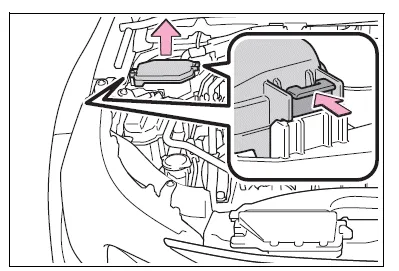
Engine compartment: type B fuse box
Push the tabs in and lift the lid off.

Under the driver's side instrument panel
Remove the lid.
Make sure to push the claw when removing/installing the lid.

3. Remove the fuse with the pullout tool.
Only type A fuse can be removed using the pullout tool.

4. Check if the fuse is blown.
Replace the blown fuse with a new fuse of an appropriate amperage rating. The amperage rating can be found on the fuse box lid.
Type A
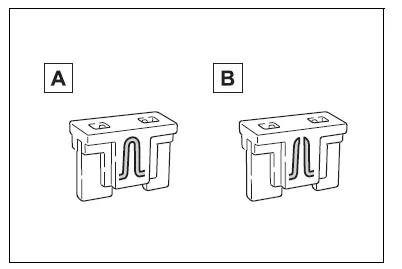
- Normal fuse
- Blown fuse
Type B

- Normal fuse
- Blown fuse
Type C
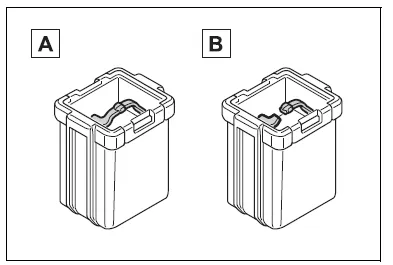
- Normal fuse
- Blown fuse
Type D
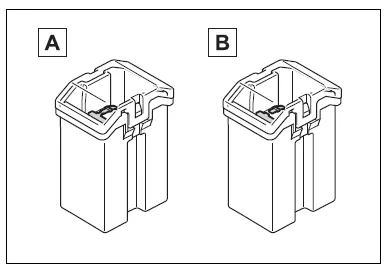
- Normal fuse
- Blown fuse
Type E
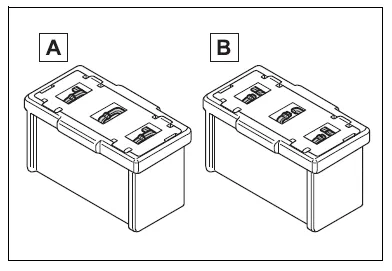
- Normal fuse
- Blown fuse
■After a fuse is replaced
- When installing the lid, make sure that the tab is installed securely.
- If the lights do not turn on even after the fuse has been replaced, a bulb may need replacement.
- If the replaced fuse blows again, have the vehicle inspected by your Toyota dealer.
■If there is an overload in a circuit
The fuses are designed to blow, protecting the wiring harness from damage.
■When replacing light bulbs
Toyota recommends that you use genuine Toyota products designed for this vehicle.
Because certain bulbs are connected to circuits designed to prevent overload, non-genuine parts or parts not designed for this vehicle may be unusable.
WARNING
■To prevent system breakdowns and vehicle fire
Observe the following precautions.
Failure to do so may cause damage to the vehicle, and possibly a fire or injury.
- Never use a fuse of a higher amperage rating than that indicated, or use any other object in place of a fuse.
- Always use a genuine Toyota
fuse or equivalent.
Never replace a fuse with a wire, even as a temporary fix.
- Do not modify the fuses or fuse boxes.
NOTICE
■Before replacing fuses
Have the cause of electrical overload determined and repaired by your Toyota dealer as soon as possible.
Other materials:
Replacement
1. Remove front door scuff plate rh
Using a screwdriver, remove the front door scuff plate rh.
Hint:
tape the screwdriver tip before use.
Remove front door scuff plate lh
Remove rear door scuff plate rh
Using a screwdriver, remove the rear door scuff plate rh.
Hint:
tap ...
Heater & air conditioner
Service data
Torque specification
Supplemental restraint system
Torque specification
Seat belt
Torque specification
Wiper & washer
Torque specification
Audio & visual system
Torque specification
Instrument panel/meter
Torque specification
Seat
Torque sp ...
Catalyst monitor (o2s type)
Preconditions
The monitor will not run unless:
mil is off.
Engine coolant temperature (ect) is 176°f (80 °C) or greater.
Intake air temperature (iat) is 14°f (–10 °C) or greater.*
Notice:
* 2002 and later my vehicles:
the readiness test can be completed in cold ambient c ...


